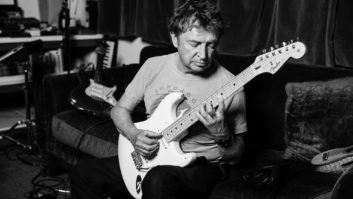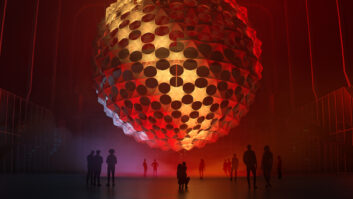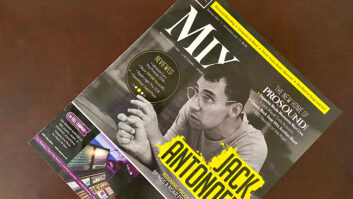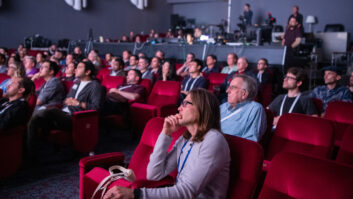There’s a scene in the movie School of Rock where the Jack Black character, the temp music teacher at a private school, is walking back and forth between the 5th graders’ desks and asking them repeatedly, with growing exasperation, “What’s the first thing you do when forming a band?” A series of comically typical answers follow until Black finally shouts, “No, no, no! You start by discussing your musical influences!”
Then, of course, he starts asking these 10-year-olds to name their musical influences. “Christina Aguilera!” shouts the first. “No!” he yells back. “Puff Daddy!” from the second row. “No!” “Liza Minnelli!” shouts another. Jack Black just stares the kid down, then scans the room and roars in disbelief, “Have any of you ever heard of Led Zeppelin?” Crickets. “AC/DC? Sabbath? Motorhead?” Nothing. This is after he’s taught them the opening riff to “Smoke on the Water” and before Zach, the lead guitar player whose dad won’t let him play electric, writes the rock anthem that they perform at the Battle of the Bands.
It’s one of my guilty-pleasure movies, having first seen it with my teenage daughters back in 2003. I happened to flip by it just the other night, so I stopped to watch for a minute…okay, an hour. It still brings a chuckle.
The next day it also got me thinking. What else influences an artist’s development, a musician’s songwriting or a new band’s style? What else influences an engineer’s approach to a mix or a producer’s desire to point an artist in a new direction? Certainly other genres of music have influence, but what besides music? What other influences and inspirations do we bring to the creative, music-making process that we might not even be aware of?
At the same time all this was all dancing around in my head, I was doing background research on David Crowder for this month’s cover story. While he has played piano since age 10 and majored in music at Baylor, he didn’t pick up a guitar until he was blown away by some “fountain guy” on campus picking and slapping on an acoustic all by himself and bringing out sounds Crowder didn’t know were possible. He didn’t know what a standard tuning was, let alone alternates. But he sure learned guitar, and he credits that moment with opening his eyes and ears to true creative inspiration.
Until that point, he had been primarily involved in traditional Contemporary Christian Music, and had earned his first attention for songs he had written for services at the University Baptist Church he helped to found while a student at Baylor. After that moment, he started to add strings of all kinds to the David Crowder Band recordings and performances. Later he would add electronica elements, country, bluegrass, rock, blues, and more strings. He used drum machines and samples, and, after moving to Atlanta in 2012, he began to groove to hip hop and solidify his passion for low end. Lately, he’s big on the sound of Post Malone.
Most of that could be found online. When I called for the interview, I realized that he finds inspiration from so many other places, like a child at play and full of discovery. He’s a lover of modern art and a big fan of architecture. He writes books and has dabbled in poetry. Lighting and mood are important to his process, as are comfort and flexibility. He likes sculpture, history and local flavor. The Arts, with a capital A, contribute enormously to his creative bent, right alongside the church and his relationships within the community. At heart he’s a tech-geek, and that, too, has a place among his many influences, from back in his early MIDI days and way-ahead-of-his-time video and social presence to connect with his fans.
Crowder is not unique by incorporating those things that shape his outside life into his musical life, but in his case it is evident, and he approaches the mishmash of influences and inspiration with a playful sense of wonder.
So many times over the years I’ve heard engineers and musicians talk about tone, outboard effects or instruments in terms of colors, referring to the “palette” they use to create a “song painting.” I’ve heard others talk of a symphony performance like a fine meal or a fine wine, with the flavors distinct and yet part of the whole. Or the Hollywood mixer who speaks of crafting a scene with the pacing of a Daytona 500 or the quiet of an Emily Dickinson poem.
Influence and inspiration run deep, often rising to the surface and sneaking back below without our even knowing it. We all have our original musical influences, some that we cling to just as fanatically as Jack Black and his love for the Gods of Rock. But we all bring so much more to the game. That’s the magic of music.







